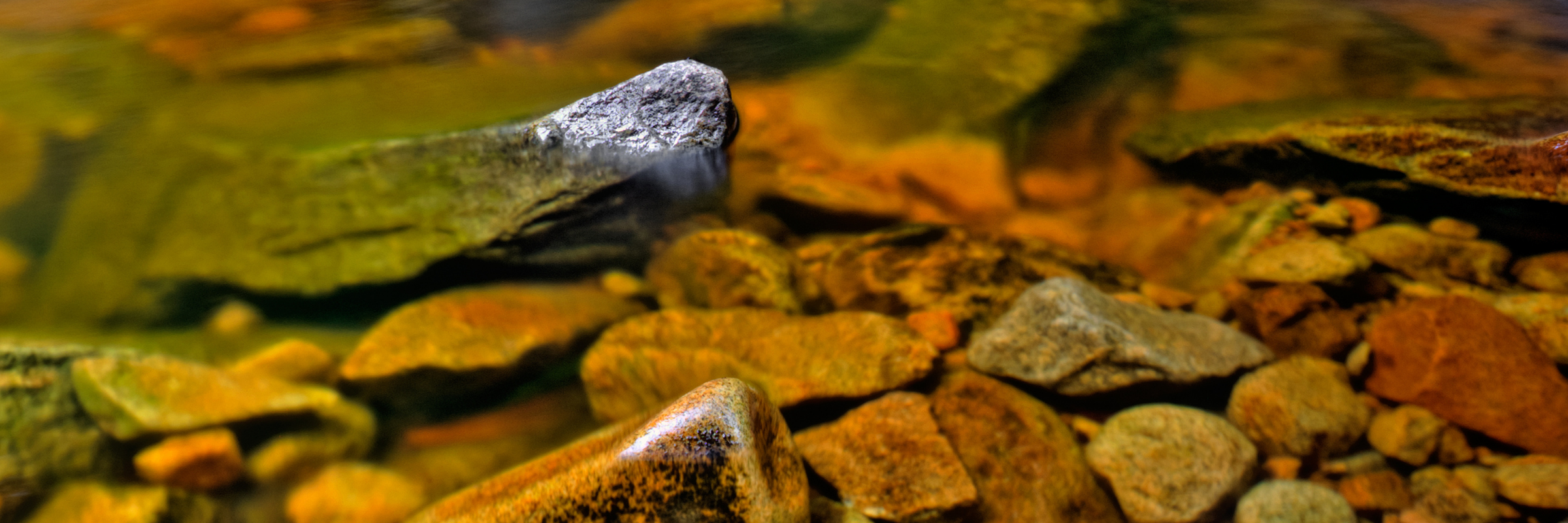
Watching brightly coloured fish dart about is oddly peaceful, and it becomes easy to lose yourself in the wonders of all the species of fish that exist when you’re watching them. Among these fishes, there’s a curiously wide range of variations and habitats that have slowly evolved over the years. You’re most likely to find these conventional habitats in lakes, ponds, rivers, rock pools, and the open sea. This is what we call a biotope.
A biotope is, in essence, a community of fish, invertebrates, and plants that naturally find a harmonious balance together. This is a very general and wide definition because a biotope could also mean a set of species from very different habitats. The choice of habitat is up to the keeper, but the idea of choosing species that naturally fit together has many benefits in the long run.
As a fish lover and potential fish owner, it’s important to know how to create the perfect home for your soon-to-be loved ones. As any person would agree, a home needs to be warm, loving, clean, neat, and above all else, it needs a little style and pizzazz or for a simpler word – personality.
This article will help you do just that! This is the first introduction to a series of six articles that we will be dedicating to biotope aquariums. We want you to have all of the research that you need at your fingertips, to help you create the perfect home for your fish friends.
In this article, we’re going to be looking at the basics of setting up a biotope aquarium, and the different options you can try out to find your tank’s personality.
First things first, to set up a biotope aquarium, you should start with some simple parameters. A country is perhaps too general, but a river system is usually a fine idea. You could also leave some space in your definition to allow you the choice of the nicest species. I would start by finding a species that you would like to keep, and then finding other fish that are found in the same region or same habitat.
This type of information is not always easy to find, but travelling aquarists have a reasonable number of videos and photos on the Internet that can help you come up with a nice set of fish that are found together in nature.
Taking it one step further, the plants and even the invertebrates could also match the natural habitat of these fish, and help create a small slice of what the home of the fishes would look like in nature.
To get you started, let’s look at all the dimensions and specifics that you would need to recreate a Southeast Asia Back-water Habitat:
Southeast Asia Back-Water
Southeast Asia is home to several of the species that dominate fishkeeping. Its waters are neither too hard nor too soft, and many fishes are found able to adapt to these aquarium conditions. The streams are packed with organic materials that are often stained brown by the iron-rich, red rocks that are found on the floor. The waters usually are found to be fairly soft, and often low in oxygen.
Planning the Tank
The size of the tank is not a crucial factor, although there should be plenty of room and enough plants for shy fishes to hide from potentially aggressive tankmates. The highly irritable nature of the fishes included in this tank means that it may ultimately be necessary to remove the aggressive individuals from the aquarium.
It is a good idea to check with the aquarium dealer before buying to ensure that your selection of fishes will consist of species that are compatible with one another.
The temperature of the water should lie between 24°C to 26°C, and the pH balance of the tank should be low, maybe somewhere between 6 and 6.5. The hardness of the water should also stay below 100mg/litre CaCO3.
Although most of the fishes in this tank are accustomed to coping with difficult conditions in the wild and are mostly tolerant of different water chemistry, the pH level, and water hardness should not be allowed to rise too high.
Water hardness is the amount of dissolved calcium and magnesium in the water. Hard water is high in dissolved minerals, mainly calcium and magnesium. When hard water is heated, such as in a home water heater, solid pieces of calcium carbonate can form.
Essential Tools
The tank needs to accommodate around 159 litres of water and should not be filled with more than a maximum of 152 cm of fishes. The dimensions of this tank could be around 91 x 46 x 38 cm to carry the desired ratio of water and fish.
Tap water is generally suitable for the tank, but it should be mixed and demineralised water to keep its hardness down. The tank should be heated by one 250-watt heater or thermostat and can also be lit up by two fluorescent tubes.
A good addition to the tank could also be a power filter that is not too strong.
Ingredients

Stones – Multicoloured stones give a welcome element of colour to the tank.

Silver Sand – This sand helps to bind the aquatic soil base.

Red Gravel – The red gravel suggests the iron-rich gravels of a Malaysian stream.

Bamboo plant – also called Blyxa japonica. The long leaves of this plant flow elegantly in water.

Giant Hygrophila – also called Nomaphila stricta. This plant grows very rapidly, often protruding right out of the water.

Aquatic Soil – Special soil sold for aquaria provides an excellent growing medium for the difficult bamboo plant.

Pebbles – Carefully chosen pebbles and small rocks can also add red to the substrate.
Building the Tank
This can be done in three easy steps:
Cover the base of the tank with aquatic soil and on top of this lay approximately 2cm of silver sand. Pat this into the sand with your fingers.
Add the pebbles and a generous sprinkling of red gravel. Gaps between the pebbles may be used as hiding places by more reclusive fishes.
Run the water over a plastic sheet to avoid too much agitation of the soil. This can cause clouding of the water and may coat the leaves with a fine tilth of the soil.
Suitable Plants Include:

Blyxa japonica is a beautiful species that has gained widespread popularity over the past five or ten years. Blyxa japonica is typically found in shallow pools of water, swamps and slow flowing rivers in East and Southeast Asia. This plant has a distinct grass-like appearance that moves easily in circulating aquarium water, thus creating a sense of dynamicity in comparison to other more robust plants.

Hygrophila corymbosa angustifolia is often used as a background plant. The long, thin, lanceolate leaves are light green in colour and provide an elegant contrast to the darker, rounder foliage found on Anubias species. Hygrophia corymbosa angustifolia is a great selection and makes for quite a natural look as its leaves flow with the current. This aquarium plant is currently sold as a bunch plant.

Cyperus helferi is one of the few plants of the Cyperaceae family that can live underwater. Cyperus helferi produces long leaves that bend elegantly along the water column. Despite the fact that it is a “rosette” style plant, it develops a very small system of roots. This plant requires a relatively large amount of light, and regular CO2 addition is recommended to promote growth.

Bucephalandra are slow-growing, hardy plants that are especially well suited to grow against the hardscape of rock or wood. Due to their flexible light demands, they can be grown in both shaded and well-lit portions of the tank. Bucephalandra plants can survive in tanks without CO2 or much fertilisation. However, they do better with a good flow of CO2.
Suitable Fish Ideas:

- Description – This fish is found in an array of vibrant colours, although they commonly have either a red or purple body.
Length – 6 cm.
Ease of keeping – Fairly easy to keep, although the aquarium water must always be stable and well-filtered.
Food – Prefers flake.
Breeding – This fish is a bubble-nester, so you will need to keep one male with two females.
Swimming level – These fishes prefer swimming in the upper water levels of the aquarium.

- Description – This fish has a blue-grey body that is decorated with horizontal silver-gold lines.
Length – 5 cm.
Ease of keeping – Relatively easy to keep.
Food – Accepts most foods.
Breeding – This fish is an egg-scatterer that spawns in shoals.
Swimming level – These fishes can be found swimming in the upper levels of the aquarium.

- Description – This fish is covered in an all black body, with a very notable red tail.
Length – 12 cm.
Ease of keeping – Relatively easy to keep, but as it grows it can become territorial.
Food – Accepts most foods.
Breeding – This fish is an egg depositor, although eggs are rare to find in the aquarium.
Swimming level – These fishes prefer swimming in the low water levels of the aquarium.

- Description – The male has a light blue body that is enriched with red-orange vertical lines across its rear half.
Length – 6 cm.
Ease of keeping – Relatively easy to keep.
Food – Prefers flake.
Breeding – This fish is a bubble-nester, although fry can be difficult to rear.
Swimming level – These fishes prefer swimming in the midwater levels of the aquarium.

- Description – This fish is found in an array of vibrant colours, although they commonly have a metallic-blue body, dressed in red vertical bands.
Length – The female is 8 cm and the male is 11 cm.
Ease of keeping – Fairly easy to keep, although the species prefers temperatures of 15 to 20°C. The temperature of this tank is at the upper end of the preferred range and can be aggressive to other fish during their breeding period.
Food – Prefers flake.
Breeding – This fish is a bubble-nester.
Swimming level – These fishes can be found swimming in the midwater to upper levels of the aquarium.
The Finished Tank
The aquarium needs to capture the spirit of a slow-flowing stream that is thick, strong, and inhabits fast-growing vegetation similar to the ones that are commonly found throughout Malaysia. These streams are generally shallow, and they allow a large amount of light to infiltrate the water. The lighting level in the aquarium should also be comparatively high. The low pH that is needed can be maintained by adding peat to the filter.
This is an active aquarium, and the various species of fishes will continuously chase each other’s tails. It would be easier to keep them in similar types of groups, as this may distract their attention from the fins of other species.
Creating your own fish community is not only an interesting challenge but also a great educational experience. Don’t be too restrictive with your choice of habitat – the idea is to provide settings similar to what your key species would find in nature. But if you happen to like a certain type of fish over another, you’re welcome to explore your options.
The best part of all of this is to have fun with the concept and add your sprinkle of pizzazz into the mix. Don’t be afraid to make a few tweaks here and there so you can come up with something unique.
Our online marketplace has pretty much everything you will need to build your perfect biotope aquarium. Feel free to get in touch with us about all your questions, needs, and frustrations.
We’re all about giving our fish a happy and healthy home in the comfort of your happy and healthy home 😊










